
HOME
INTRO
SYMBOLS
ALMANAC
ECONOMY
GEOGRAPHY
STATE MAPS
PEOPLE
FORUM
NEWS
COOL SCHOOLS
STATE QUIZ
STATE LINKS
BOOK STORE
MARKETPLACE
NETSTATE.STORE
NETSTATE.MALL
GUESTBOOK
CONTACT US


Texas State Grass
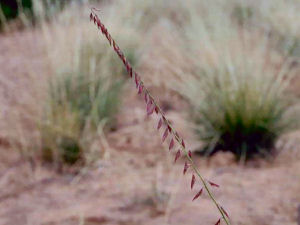
Texas State Grass: Sideoats Grama
Howard F. Schwartz, Colorado State University, Bugwood.org
On the recommendation of the Texas Council of Chapters, the Soil Conservation Society of America, and the Texas Section, American Society of Range Management, sideoats grama (Bouteloua curtipendula) became the official state grass of Texas when Governor Preston Earnest Smith signed Senate Concurrent Resolution No. 31 on April 12, 1971.
SENATE CONCURRENT RESOLUTION NO. 31
WHEREAS, Texas relies heavily upon the native grasses of the rangelands to sustain the livestock that has made ranching one of our State's major industries; and
WHEREAS, Although there are many desirable forage species native to the State, one variety, sideoats grama, occurs on a greater diversity of soils than possibly any other grass; on rangelands of West Texas it is the backbone of the ranching industry; and
WHEREAS, This grass, with the botanical name bouteloua curtipendula (Michx.) Torr., is a perennial with long purplish spikes and is found in nearly all parts of the State, being especially abundant in area including the Blackland Prairies, Cross Timbers, Edwards Plateau, Rolling Plains, High Plains, and Trans-Pecos; and
WHEREAS, Sideoats grama produces a high quality, nutritious forage which is relished by all classes of livestock and wildlife; it is one of the State's most attractive grasses as well, with its brilliant orange anthers and the purple inflorescence it produces upon maturity; each spike turns to one side of the seed stalk at maturity, giving the grass its name of sideoats; and
WHEREAS, This grass is also favored because it is not only winter hardy but is highly drought resistant due to the fact that it is a long-lived perennial grass with rhizomes; in some years the grass produces two seed crops, and growth begins early in the spring and continues until early fall; and
WHEREAS, In addition to its use for forage, sideoats grama is being used extensively to reseed depleted grasslands, and it produces vigorous seedlings making it an excellent grass for all conservation purposes; it mixes well with other native grasses and is being used in this way more than any other grass; and
WHEREAS, The State of Texas has not officially designated a State grass and both the Texas Council of Chapters, Soil Conservation Society of America, and the Texas Section, American Society of Range Management, have requested that the 62nd Legislature officially name sideoats grama as the Texas State Grass; now, therefore, be it
RESOLVED, By the Senate of the State of Texas, the House of Representatives concurring, that sideoats grama, [bouteloua curtipendula (Michx.) Torr.] be and is hereby designated as the official State grass of Texas in accordance with the recommendations of the Texas Council of Chapters, Soil Conservation Society of America, and the Texas Section, American Society of Range Management.
Texas Law
Like most Texas symbols, sideoats grama was adopted as the official state grass of Texas by concurrent resolution and, therefore, is not listed in the Texas Statutes.
Sources...
"Senate Concurrent Resolution No. 31." Legislative Reference Library of Texas. Legislative Reference Library of Texas, n.d. Web. 18 Dec 2011. .
Shearer, Benjamin F. and Barbara S. State Names, Seals, Flags and Symbols: A Historical Guide Third Edition, Revised and Expanded. Westport, Conn: Greenwood Press, 3 Sub edition, 2001.
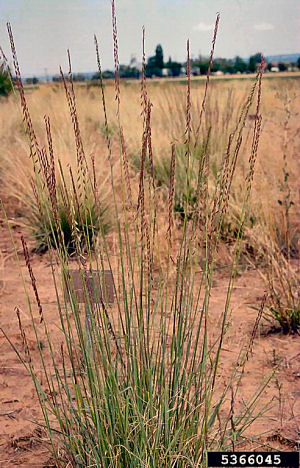
Texas State Grass: Sideoats Grama
Howard F. Schwartz, Colorado State University, Bugwood.org
Additional Information
Sideoats grama Bouteloua curtipendula var. curtipendula: Know Your Grasses: AgriLife Extention: Texas A&M System.
Plant Fact Sheet :
SIDEOATS GRAMA Bouteloua curtipendula (Michx.) Torr. USDA, NRCS. 2011. The PLANTS Database (http://plants.usda.gov, 18 December 2011). National Plant Data Team, Greensboro, NC 27401-4901 USA.
:
SIDEOATS GRAMA Bouteloua curtipendula (Michx.) Torr. USDA, NRCS. 2011. The PLANTS Database (http://plants.usda.gov, 18 December 2011). National Plant Data Team, Greensboro, NC 27401-4901 USA.
Plant Guide :
SIDEOATS GRAMA Bouteloua curtipendula (Michx.) Torr. USDA, NRCS. 2011. The PLANTS Database (http://plants.usda.gov, 18 December 2011). National Plant Data Team, Greensboro, NC 27401-4901 USA.
:
SIDEOATS GRAMA Bouteloua curtipendula (Michx.) Torr. USDA, NRCS. 2011. The PLANTS Database (http://plants.usda.gov, 18 December 2011). National Plant Data Team, Greensboro, NC 27401-4901 USA.
Bouteloua curtipendula (Michx.) Torr.: sideoats grama - USDA, NRCS. 2011. The PLANTS Database (http://plants.usda.gov, 18 December 2011). National Plant Data Team, Greensboro, NC 27401-4901 USA.
Bouteloua curtipendula (Michx.) Torr.: sideoats grama: Native Plant Database, Lady Bird Johnson Wildflower Center, the University of Texas at Austin.
State grasses: Complete list of official state grasses from NETSTATE.COM.
More symbols & emblems: Complete list of official Texas state symbols from NETSTATE.COM.
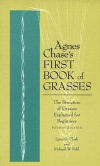
Agnes Chase's First Book of Grasses, by Lynn G. Clark and Richard W. Pohl. 127 pages. Publisher: Smithsonian; 4th Edition (April 17, 1996) For almost seventy-five years, Agnes Chase's First Book of Grasses has been the classic guide to the structure of this complex group of plants. Clearly written and copiously illustrated with line drawings, the book is accessible to those with little or no botanical training, yet it also is respected by botanists as an authoritative introduction to agrostology.
Highly recommended for "wannabe" botanists and plant lovers, this book divides the complexity of grasses into twelve relatively simple lessons. The book now has been thoroughly revised to reflect current scientific knowledge, nomenclature, and classification.
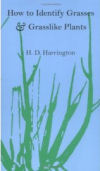
How To Identify Grasses & Grasslike Plants, by H.D. Harrington. 164 pages. Publisher: Publisher: Swallow Press; 1st ed edition (January 1, 1977) There is no easy was to identify grasses. And no one understood this better than H.D. Harrington, who observed thousands of students struggle and learn.
His clear, concise, and well-organized guide will continue to be a basic and essential text for use in the classroom or in the field. The book contains over 500 drawings and an illustrated glossary.
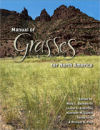
Manual of Grasses for North America, Edited by Mary E. Barkworth, Laurel K. Anderton, Kathleen M. Capels, Sandy Long, and Michael B. Piep. 640 pages. Publisher: Utah State University Press; 1 edition (September 30, 2007) Grasses are the world's most important plants. They are the dominant species over large parts of the earth's land surface, a fact that is reflected in the many different words that exist for grasslands, words such as prairie, veldt, palouse, and pampas to mention just a few. As a group, grasses are of major ecological importance, as soil binders and providers of shelter and food for wild animals, both large and small. Some grasses, such as wheat, rice, corn, barley, rye, tef, and sugar cane are major sources of calories for humans and their livestock; others, primarily bamboos, are used for construction, tools, paper, and fabric. More recently, the seed catalogs that tantalize gardeners each winter have borne witness to an increasing appreciation of the aesthetic value of grasses.
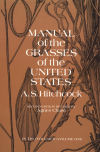
Manual of the Grasses of the United States Volume 1, by A.S. Hitchcock. 525 pages. Publisher: Dover Publications; 2 edition (June 1, 1971) Volume 1 of the basic study of American grasses, both indigenous and escapes, cultivated and wild. Over 1400 species. Full descriptions, information. Total in set: over 1100 maps, illustrations. "A definitive work invaluable to both amateur and professional botanists." -- American Reference Books Annual. This volume revised by Agnes Chase.
Manual of the Grasses of the United States Vol. 2, by A.S. Hitchcock. 525 pages. Dover Publications; 2nd edition (June 1, 1971) Volume 2 of the basic study of American grasses, both indigenous and escapes, cultivated and wild. Over 1400 species. Full descriptions, information. Total in set: over 1100 maps, illustrations. "A definitive work invaluable to both amateur and professional botanists." -- American Reference Books Annual. This volume revised by Agnes Chase.

